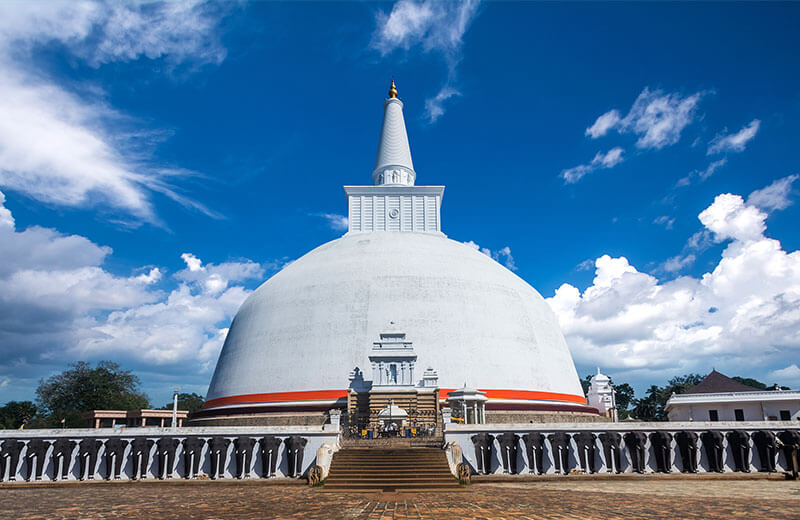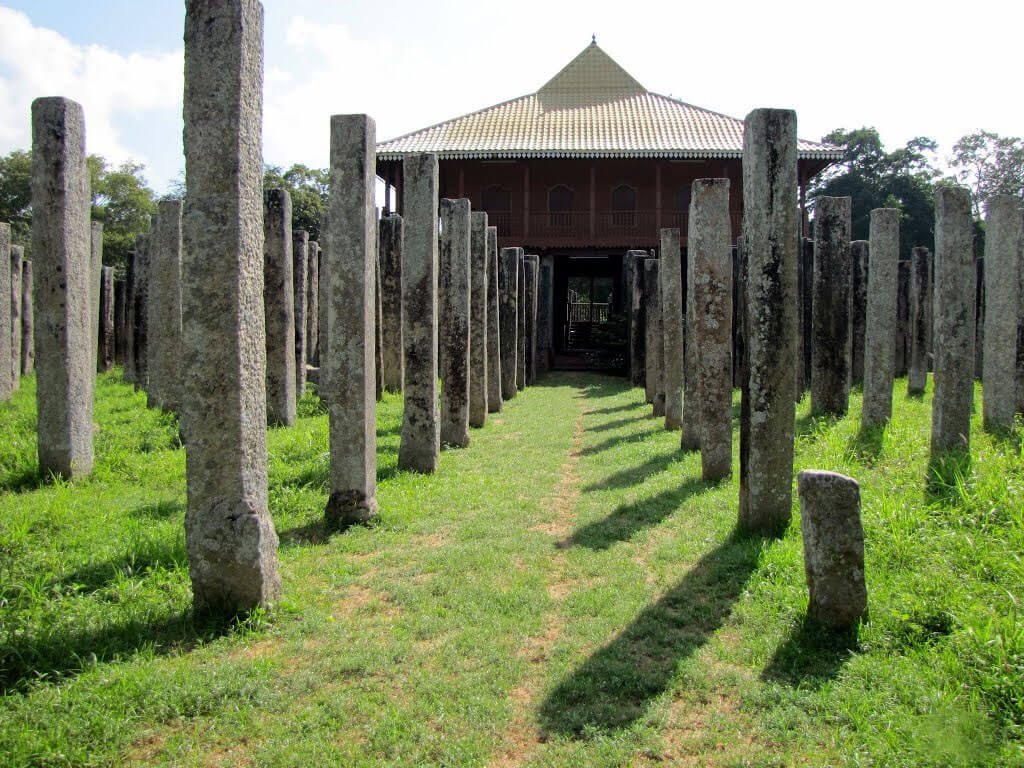
Abhayagiri Vihāra was a major monastery site of Mahayana, Theravada and Vajrayana Buddhism that was
situated in Anuradhapura, Sri Lanka. It is one of the most extensive ruins in the world and one of
the most sacred Buddhist pilgrimage cities in the nation. Historically it was a great monastic
centre as well as a royal capital, with magnificent monasteries rising to many stories, roofed with
gilt bronze or tiles of burnt clay glazed in brilliant colors. To the north of the city, encircled
by great walls and containing elaborate bathing ponds, carved balustrades and moonstones, stood
"Abhayagiri", one of seventeen such religious units in Anuradhapura and the largest of its five
major viharas. One of the focal points of the complex is an ancient stupa, the Abhayagiri Dagaba.
Surrounding the humped dagaba, Abhayagiri Vihara was a seat of the Northern Monastery, or Uttara
Vihara and the original custodian of the Tooth relic in the island.
The term "Abhayagiri Vihara" means not only a complex of monastic buildings, but also a fraternity
of Buddhist monks, or Sangha, which maintains its own historical records, traditions and way of
life. Founded in the 2nd century BC, it had grown into an international institution by the 1st
century AD, attracting scholars from all over the world and encompassing all shades of Buddhist
philosophy. Its influence can be traced to other parts of the world, through branches established
elsewhere. Thus, the Abhayagiri Vihara developed as a great institution vis‑a‑vis the Mahavihara and
the Jetavana Buddhist monastic sects in the ancient Sri Lankan capital of Anuradhapura.







